Jane Austen
Jane Austen is known mainly for six published novels. When she died at the age of forty-one in 1817, only four of her novels had been published and she had only had modest success. >Northanger Abbey, an earlier work, and Persuasion, were both published posthumously. Other juvenilia and unfinished works were later published, some well into the latter half of the 19th century. The driving narrative concern of Austen’s novels is the problem of young women making a good match in marriage. In Pride and Prejudice, Elizabeth makes the ultimate match when she and Mr Darcy overcome their early animosity. Mr Darcy is extremely rich, and this pleases Elizabeth’s mother even if Mr Darcy’s manner originally offended her. Austen’s novels satirise the sensibilities of English society in her time. They are witty and funny. Jane Austen, herself, never married, although it is possible she may have been attracted to Thomas Lefroy, the nephew of a family friend. The family sent Lefroy away, possibly to separate him from Jane. Neither Jane Austen nor Thomas Lefroy had money to marry, and this would have been considered a major obstacle from the point of view of the Georgians.
The Military
The prime interest in Pride and Prejudice is romance and the getting of husbands. Set during the Napoleonic wars, there is a regiment of soldiers posted nearby, which is of interest to young women in the area. The uniforms of officers at the time were bright and smart, and added to their appeal. This image shows Adrian Lukis as Mr Wickham in the BBC mini-series made for television in 1995. Here, Wickham is a particularly debonair young soldier who quickly wins the approval of the Bennett sisters.
Georgian Architecture
The formal architecture of the Georgian period reflects the sense of order and class felt by the upper echelons of English society. The architecture of the period is reflected by its symmetry and balance, its ornate decoration, its beauty, elegance and stately appearance. Mr Darcy’s home, Pemberley, would be a supreme expression of this style. The architecture also reflects the character and manners of the period: cultured, controlled and acting within strict parameters of social etiquette.
Pride and Prejudice and Zombies
Pride and Prejudice transcends its original cultural context. It is now popular as a romantic story and as social satire, but it has also been widely adapted for modern audiences. Apart from various movie and television adaptations, as shown by the trailers at the end of this review, it has also been re-imagined as a modern romance, Bridget Jones’ Diary (2001) (again starring Colin Firth, who played Mr Darcy in the 1995 BBC production, as Darcy). In Lost in Austen (2008), a modern fan of Austen, Amanda, finds herself transported to Regency England in the place of Elizabeth Bennett. Austen’s novel has also been adapted as crime fiction. In 2011 P.D. James adapted the novel as a murder mystery in Death Comes to Pemberley (the novel was adapted for television for the BBC in 2013). Wickham is accused of the murder of Captain Denny and is made to undergo a trial. A more outlandish adaptation of Austen’s work is Set Grahame-Smith’s adaptation of the original novel, Pride and Prejudice and Zombies to form a hybrid story in which England is overrun with zombies. Director Burr Steers adapted the novel for the screen in 2016. Set firmly in the Regency England, but with a modern sheen to its décor and dress, the Bennett sisters are independent modern women with incredible fighting skills, honed to take down the living dead.
King George IV and the Regency Period
Pride and Prejudice was written and set during the Regency Period of Britain. The Prince Regent, George, Prince of Wales, the son of George III, effectively assumed control of the throne from 1811 with the passing of the Regency Act, which recognised that George III was incapacitated with mental health issues. For Americans, this would be the equivalent of invoking the 25 Amendment, which replaces the President with the Vice President in the event of death or incapacity. When George III died in 1820 the Prince Regent succeeded his father as George IV. Technically, the regency period covers these years, but it is more commonly accepted to include the period beginning with the early Napoleonic Wars, all the way to the accession of Queen Victoria to the throne in 1837.
The period is characterised by poverty and war for the main part of the population, and the increasing industrialisation of work and the concentration of the population in cities. But it is also remembered for its fine architecture and fashion, as well as the rise of the Romantic movement, which includes English poets like William Wordsworth and Samuel Taylor Coleridge. Pride and Prejudice was published in 1813, two years after the Regency Act and two years before the end of the Napoleonic Wars. Despite this, Austen is not strictly a Romantic writer (though her subject includes romance) since she writes in reaction to the Romantic movement, especially in Northanger Abbey. But this is so even in Pride and Prejudice, in which rational choice and an interest in the strict social hierarchy of English society continues to inform Austen’s satire.
The painting, above, by Thomas Lawrence, shows George IV wearing his Coronation Robes in 1820 after the death of his father, George III.

 RSS Feed
RSS Feed Facebook
Facebook Instagram
Instagram YouTube
YouTube Subscribe to our Newsletter
Subscribe to our Newsletter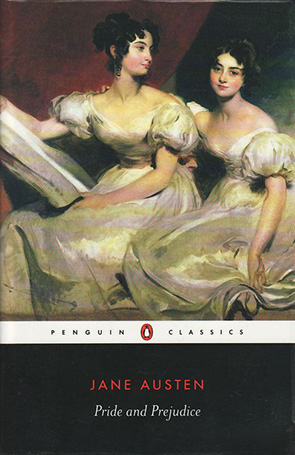


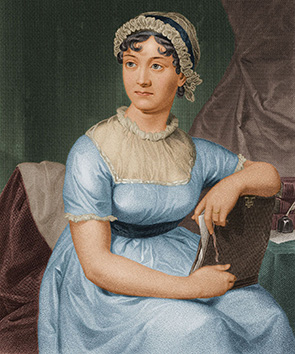
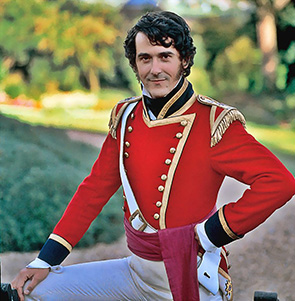
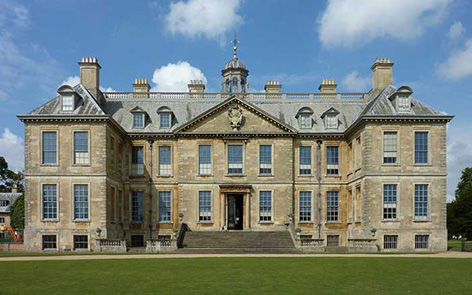
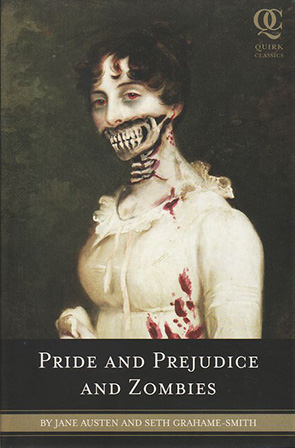
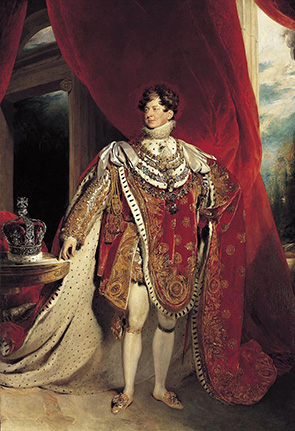


No one has commented yet. Be the first!